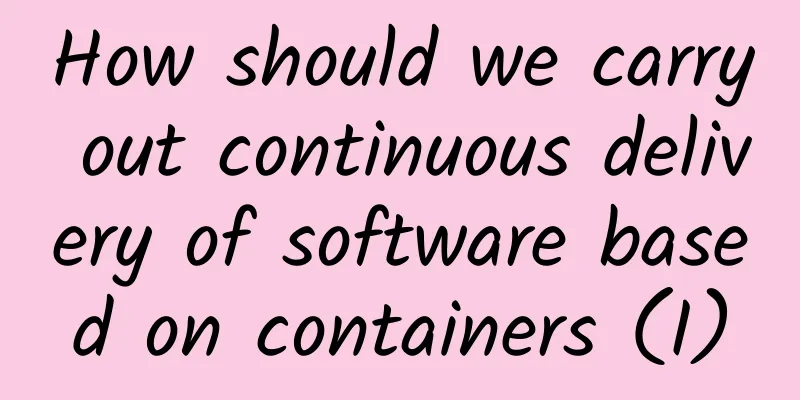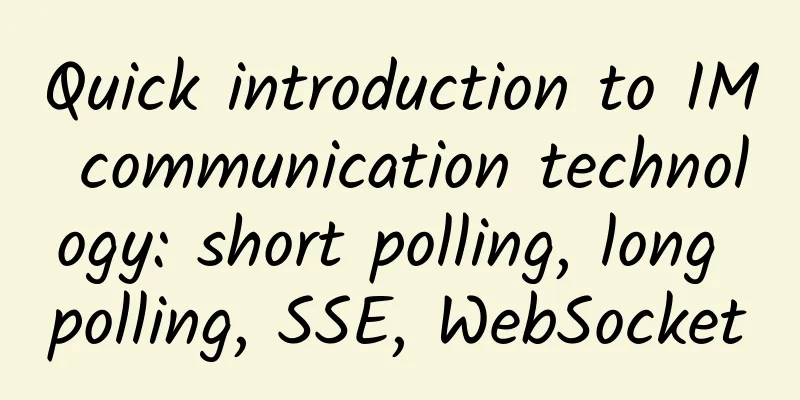How should we carry out continuous delivery of software based on containers (I)

|
Overview In the past period of time, containers have been widely used in all aspects of IT software production: from software development, continuous integration, continuous deployment, test environment to production environment. In addition to Docker's official Docker Swarm, Docker Machine and Docker Compose, the open source software community has also emerged with a series of container-related tools that cover all aspects of container orchestration, scheduling, monitoring, logging, and more. This article will focus on the software development process and solve the problem of continuous software delivery and team collaboration based on containers. Using containers in continuous integration Build a unified environment management In the traditional mode, using continuous integration tools such as Jenkins, the first problem in deploying an enterprise continuous integration platform is the diverse build environment requirements. The usual practice is to assign the build agent (server or virtual machine) to the team and let the team manage the environment configuration information of the build server and install the corresponding build dependencies. Using Docker in Continuous Integration
As shown above, we can easily build the software package through the container. There are several points to note: The --rm command ensures that the container created during the build is automatically cleaned up after the command is executed. I think you don’t want to have to clean up the build server disk from time to time. -v In addition to mounting the current source code into the container, we can also cache some dependencies required for the build by mounting the disk, such as the jar package downloaded by Maven, to improve compilation efficiency. --workerdir is used to specify the working path for the build command to be executed. Of course, it needs to be consistent with the workspace. As mentioned above, based on containers we can quickly build a CI build environment that adapts to a variety of build requirements. All you need is Docker on your build server. Using docker-compose in continuous integration In some cases, we may need to use some real third-party dependencies, such as databases or cache servers, during the build or integration test phase. In traditional continuous integration practices, you usually either use the deployed database directly (remember to clean up the test data and ensure concurrency), use the in-memory database instead of the real database, or use mocks or stubs for testing. Of course, ideally we still want to use a real database or other middleware service that is consistent with the real environment. Based on docker-compose, we can easily meet the needs of complex build environments.
Let's take Maven as an example. Suppose we need to use MySQL in the build to support the requirements of integration testing.
Building a Continuous Delivery Solution Establishing a cross-functional R&D team with common goals is the foundation of the DevOps movement. Automation is the cornerstone of improving efficiency. Based on the above, how do we build our continuous delivery solution based on containers? Infrastructure Automation The reason for using Rancher is simple. Rancher is the only container management platform on the market that can be used out of the box. It can also support multiple orchestration engines, such as Rancher's own Cattle, Google's K8S, and Docker's official Swarm as container orchestration engines. At the same time, the Catalog application store provided by Rancher can help the R&D team independently create the required service instances. Creating a continuous delivery pipeline The core issue of establishing a continuous delivery pipeline is how to define the enterprise's software delivery value flow. As shown in the figure below, we summarize the use of some typical tools used in various stages of development, continuous integration, and continuous delivery, as well as the relevant activities of the relevant teams in each stage, and typical DevOps-related activities. Team collaboration in the continuous delivery pipeline As mentioned above, the essence of creating a continuous delivery pipeline is to define the value flow of software delivery and reflect the formal software delivery process. The flow of value involves a high degree of collaboration among members of various functions in the team. In the container-based continuous delivery practice, images are used as value transfer between people in different functions.
In the container-based continuous delivery implementation solution, we use images as the unit of value transfer. Through continuous testing and verification of images, we complete the transformation of images from development and testing to releasable states and complete the software delivery process. |
<<: Is there still room for wireless mesh networking in the enterprise?
>>: How Amazon can achieve continuous delivery
Recommend
VIRPUS: $35/month-E3 1230/16GB/500GB/5TB/Seattle data center
VIRPUS is a long-established foreign VPS hosting ...
Qualcomm demonstrates 5G new air interface connection based on 3GPP for the first time, which is expected to become a global standard
At the "2017 Qualcomm 5G Summit" held r...
Thoroughly understand Cookie, Session, Token
[[281563]] Development History 1. A long time ago...
Five-minute technology talk | The next milestone in the 5G era: 5.5G
The 5G communication network has the characterist...
You know Bitcoin, but do you really understand blockchain?
When it comes to Bitcoin, everyone should be fami...
The Master Key is so powerful! Why can't it crack my neighbor's WiFi? Let's take a look at its cracking principle first
However, you may have discovered a problem. The u...
In the era of stock management, operators still need to provide refined services
Recently, the three major operators announced the...
Kuroit: £12/year KVM-1GB/10G SSD/5TB/UK & US data centers
Kuroit also released a promotion during the Chris...
SD-WAN: 10 essential considerations organizations need to weigh
SD-WAN is one of the hottest new network technolo...
Unleash the value of the document middle platform ecosystem and empower digital innovation for government and enterprises
[51CTO.com original article] With the popularizat...
Huawei's Yu Chengdong: This is a truly global mobile Internet cloud service
Normal 0 7.8 磅 0 2 false false false EN-US ZH-CN ...
The long-awaited 5G messaging trial will be launched in late October or early November
"China Unicom and China Telecom are working ...
JD Interview: What are the differences between Cookie, Session and Token?
As one of the three giants of traditional e-comme...
Delisted from the New York Stock Exchange! The three major operators gave a "cold" treatment, and the Ministry of Commerce and the China Securities Regulatory Commission responded with a "response"
Affected by the New York Stock Exchange's dec...
Telecom, Mobile, Unicom, it will be too late if they don’t transform
Digital transformation has become a social consen...


![[Black Friday] ProfitServer Singapore/Germany/Netherlands/Spain VPS 50% off, unlimited traffic KVM monthly payment starts from $2.88](/upload/images/67cac2275c1e5.webp)






